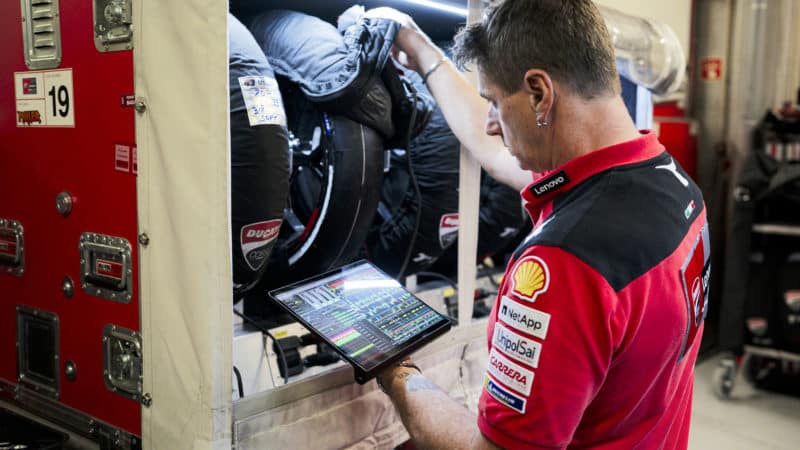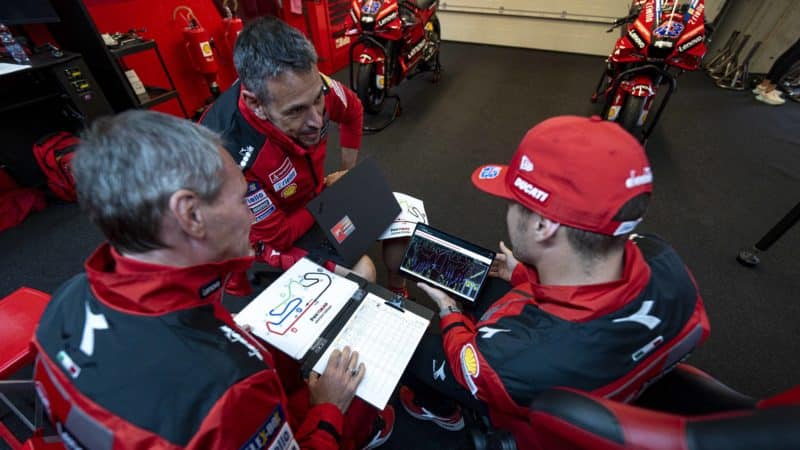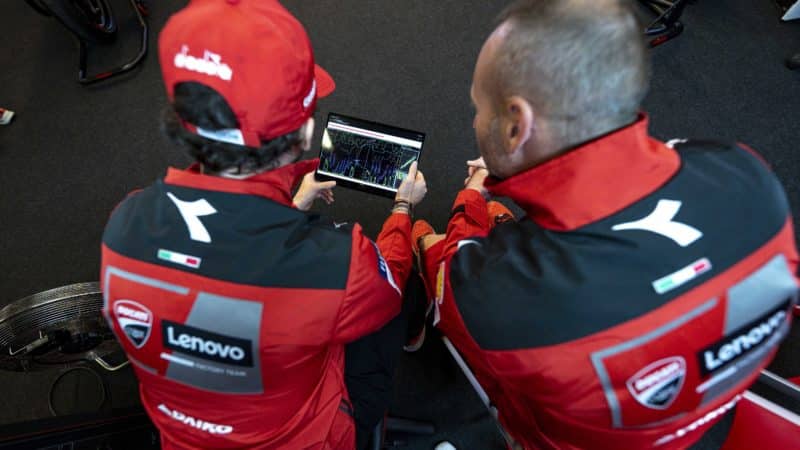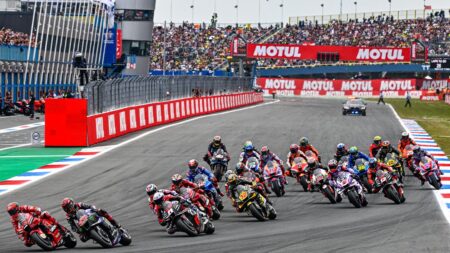AI and VR are already huge in F1, with top teams using super-powerful computers and software to run hundreds of thousands of virtual laps (yes, hundreds of thousands) before each GP weekend.
Ducati does the same thing, but on a smaller scale, because MotoGP budgets are many times smaller than F1 budgets, and because modelling a motorcycle is much more difficult than modelling a car, because motorcycle dynamics are way more complex than car dynamics.
“Because of what the bike does and the fact that the rider is always changing position makes it much more complicated to model a bike than a car,” affirms Dall’Igna.
This is another reason why having eight bikes is such an advantage, because the more data you get the more accurate the modelling.

Tyre data is arguably more important that anything else at the moment because Michelin’s slicks require deep understanding to work at their best
Ducati
Ducati uses its vast data haul to run individual laps and race distances, via AI, VR and augmented reality. This allows its engineers to visualise how a tyre will perform over a single qualifying lap and how it will degrade during a race, what effect a geometry change, suspension adjustment or mapping tweak will have at certain stages of a race and so on. Thus engineers can find the right answer to improve real-world performance faster and more accurately, so they pretty much know how the motorcycle is going to behave before it leaves pitlane.
The advantages of modelling and simulation grow year by year, not only because the technology gets better, but because there’s less and less testing and practice time allowed, so virtual testing, practising and racing has a greater effect on results.





